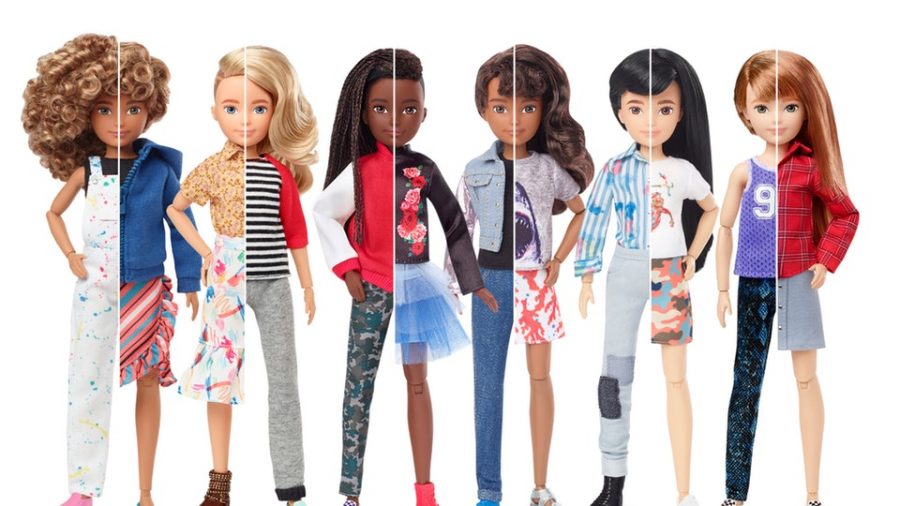The Evolution of Barbie
October 15, 2019
I don’t know about you, but I grew up playing with dolls. Whether it was with my millions of Barbie dolls or my Bratz dolls, I could play with them in my room for hours. I had dolls that were princesses or that looked like models; there were very few dolls that looked like me or any child that might play with them. Don’t get me wrong though, I still loved playing with them.
On September 25, 2019, Mattel, the company that created the Barbie and Ken dolls, released the world’s first-ever gender-neutral dolls called “Creatable World”. Children can make these dolls whatever they want: girl, boy, neither, or both! They are meant to look like 7-year-old children so that kids can play with a doll that looks like them.
These dolls don’t feature pouty lips or long, curly eyelashes. No Barbie-like breast or Ken’s broad shoulders. The dolls come in a wide variety of skin tones to represent the kids playing with them. Each doll has short hair and comes with a long-haired wig that the kids can put on or take off as they want. The wardrobe options are diverse for each kid’s fashion sense. There are blue jeans, puffy skirts, button-up shirts, graphic t-shirts, hoodies, sneakers, and boots to choose from.
I think every child loves to see dolls or action figures that look similar to them. It’s like the key chains or water bottles where you would look through each row to find your name and then beg your parents to buy it. If you’re like me and have a unique name, you get very disappointed that you don’t see Melina in fancy writing on a keychain to display on your backpack.
So what do you do? You look for something close to your first name, look for your middle name, or just settle for one with a saying on it. You still like it, but it’s not the same as having your actual name one it. The dolls are the same. Children will still like them but would love it so much more if they felt a personal connection to them.
As we got older, the toy industry kept trying to change with the times. They offered more dolls with interesting jobs such as a chef or an astronaut. They made dolls with different skin tones, hair colors, and, even more recently, body types.
Even with all of these changes, it would be wrong to say that the toy industry has caught up with society. As we continue to change and accept people, toys and need to change too. There should be no shame in a boy playing with a Barbie doll or with a girl wanting to pick up a lightsaber. These social stigmas have been slowly going away, but people who break them are still generally frowned upon. That’s why I think Mattel is heading in the right direction with their new dolls.
Reading and seeing the progress in the toy industry makes me wish this was happening when I was little. Maybe I wouldn’t have cut all those dolls hair (sorry for the bad haircut, Barbie!) or maybe I wouldn’t have made my own version of clothes out of fabric my parents bought. I think we’ll definitely see more kids of different genders, races, and sexualities pick up these new dolls and play for hours.












